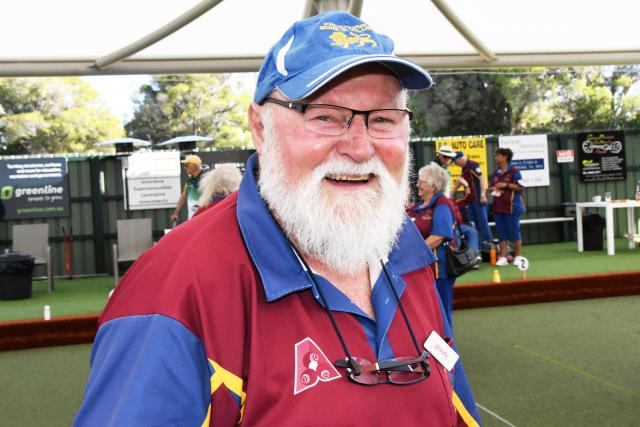With shorter days and turbulent weather during the period of May to August, failure to give way from both pedestrians and vehicles was a major factor coined by Victoria Police in a recent release for Operation Aware.
With this release, the City of Casey was among one of the LGAs with the highest number of injury-inducing collisions, with 76 per cent of said collisions occurring in 40km/h to 60km/h speed zones.
Professor and deputy director of Monash University’s Accident Research Centre, Jennifer Oxley said that a bigger push for speed reduction, further advocacy for safe driving as well as pedestrian awareness is paramount in the move to see a decline in incident numbers.
“I would say speed is really a major factor, [so] if we can get speed down in areas where there is a mix of vehicles and pedestrians, that’s probably the best thing we can do for pedestrian safety,” she said.
“40 km/h is the top speed that one should be going when having that real mix between pedestrians and vehicles; there’s motions to actually reduce that down to 30km/h.”
A comprehensive report by MUARC compiled in 2020, titled Understanding Pedestrian Crashes in Victoria highlights that for every 1km/h increase in mean speed, the number of crashes to cause injury will rise by around 3 per cent.
This means that an increase of 10km/h would therefore result in a 30 per cent increase, with the fatality risk being four to five times higher in collisions between a vehicle and a pedestrian at 50km/h compared to the same form of collisions at 30km/h.
“Those sort of areas, those school zones, those mixed-use roads where you’ve got shopping centres and the like, not only is the speed a problem, but it’s really just a complex traffic environment,” Professor Oxley said.
While the MUARC report stated that winter months still had the higher crash rates, it added that across the year for the study period of 2009 to 2018, the majority of pedestrian collisions occurred in clear weather conditions, at 82.4 per cent compared to rainy conditions at 9.3 per cent.
Furthermore, 63.6 per cent of crashes occurred in daylight hours, with 27.6 per cent when dark and 6.8 per cent at dusk or dawn.
Clearer weather tends to be linked with higher pedestrian activity in what Professor Oxley referred to as complex traffic environments, and with a higher volume of pedestrians mixed with vehicles, the probability of collision also increases.
“One of the major problems in these outer urban areas is the lack of good public transport, we find that there are more cars – since obviously, people need to use cars,” Professor Oxley said.
“The more cars we have on the roads, the more it’s going to affect pedestrian safety, so one thing councils could do is to advocate for better public transport.”
The professor also added that a high proportion of pedestrian injuries occur amongst older adults and that they are much more vulnerable when it comes to complex environments that involve multiple moving parties.
According to the report, the Victorian Injury Surveillance Unit recorded the age groups of 15-34yrs and 35-64yrs with the highest percentage for hospital admissions, with, respectively, a frequency of 3485 at 32.1 per cent and a frequency of 3328 at 30.7 per cent.
Similarly, emergency department presentations were slightly higher for both age groups; with 15-34yrs at the frequency of 4367 at 37.7 per cent and 35-64yrs with the frequency of 3542 at 30.6 per cent.
Further endorsement of traffic calming measures was something the professor said would be valuable in mitigating the increasing numbers, adding that local councils such as Casey can be “vigilant in raising awareness”, and to investigate crash-prone areas.
Casey’s manager of city and asset planning, Keri New said that the safety of pedestrians is a “priority for council”.
“To reduce vehicle speeds and support pedestrian safety council implements a program of local traffic management deterrents, including speed humps, curb changes, roundabouts and signage here repeated safety issues are identified.
“Council also operated the Supervised School Crossing program, implements new pedestrian crossings and expands the footpath network annually to further support pedestrian connectivity and safety,” she said.
Speaking on a bigger push for re-education and constant reminders for traffic safety, Professor Oxley said that “everybody has a role to play in making sure they’re behaving in a safe way”.
“I think there’s always room for people to be aware of the rules, not only for drivers but also for pedestrians.
“We should be really thinking about getting the idea out there of driving at an appropriate speed, so if you’re in a speed zone of 40, but there’s a lot of pedestrians around, maybe an appropriate speed might be less than 40 kilometres an hour,” she said.
With essentially two sets of speed limits to always be kept in mind, the responsibility, the professor added, also falls on overall system design when it comes to road safety.
“We need to make sure that we’re all operating in an environment that is designed to be the safest environment we can [make],” she said.
Ms New also added that wherever possible, council sources external funding in order to further support road safety upgrades, which in turn complement the mentioned programs.
“As the population of Casey grows, council continues to provide improvement including new footpaths, shared user paths and priority crossing areas to further protect pedestrians across Casey,” she said.







